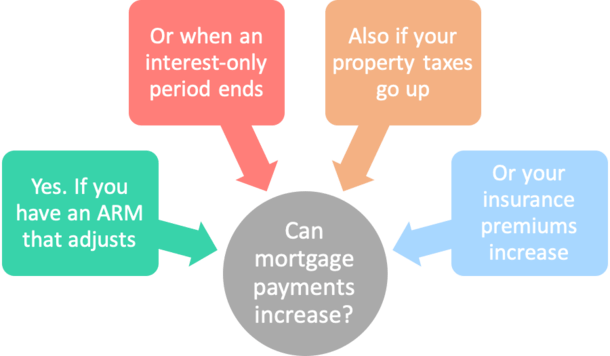The Top Producers of 2024: Nos. 51 to 100
unitedbrokersinc_m7cmpd2024-04-11T08:18:15+00:00The 2024 countdown of the National Mortgage News Top Producers list continues by featuring the loan officers ranked 51 to 100.Even with a drop in overall annual volume in 2023 to the lowest level in recent memory, the originators in our Top Producers rankings found ways to keep their personal activity robust.They did so as interest rates rose and stayed high throughout the year, reducing refinance activity. Purchase volume was affected by the inventory shortage, as well as higher home prices keeping buyers out of the market.The listing of loan officers ranked 201 to 300 can be found here and those ranked 101 to 200 here.This year marks the 26th anniversary of the Top Producers program, the successor to the listings which first appeared in Broker magazine, as well as Mortgage Originator Magazine, which Arizent owns the content rights to.The rankings are open to mortgage originators who work at depository, nonbank and mortgage brokerage firms in the United States.Information submitted about 2023 loan production was used to compile this year's Top Producer Rankings. Loan officers who submitted data for the survey represent the entire spectrum of the origination business, from banks and credit unions to mortgage bankers and mortgage brokerages, and their titles range from loan officer all the way to company president.Submissions were made by the participants or their representatives. The information was verified to the best of our ability but we don't claim the veracity of the data. Some entries might have been removed at our discretion for submission errors.The 2024 Top Producer rankings countdown will continue until the top 50 loan officers are revealed on April 12. Rank Name Company Dollar volume Number of loans 100 Kevin Serrano Rojas Ent Credit Union $42,090,079 84 99 Justin Padron Neo Home Loans $43,375,332 91 98 Chris Bufis RW Towne Mortgage $43,588,545 100 97 Jaclyn Litton Origin Bank $43,943,321 178 96 Sean Wohland Waterstone Mortgage $44,027,186 105 95 Trevor Roberge Capstone Home Loans $44,077,035 102 94 Michael Regan Axia Home Loans $44,132,784 144 93 Jacky Meacham CMG Home Loans $44,133,369 116 92 Jason Solowsky CMG Home Loans $44,295,446 114 91 Shashank Shekhar InstaMortgage $44,609,142 101 90 Richard Holsman Bay Equity Home Loans $44,635,018 103 89 Katie Andy Akpan InterLinc Mortgage $45,053,734 103 88 Katherine McClintic Jet Home Loans $45,328,460 155 87 Melanie Boyajian Academy Mortgage $45,980,558 91 86 Ravi Patel UMortgage $46,293,880 164 85 John Aragon Highlands Residential Mortgage $46,427,763 89 84 Gwen Swain Waterstone Mortgage $46,572,265 140 83 Kurt McClearen Nova Home Loans $46,908,832 138 82 Eric Bibel Neo Home Loans $46,941,322 60 81 Amie Edmondson Bay Equity Home Loans $47,373,704 92 80 Chad Loube George Mason Mortgage - United Bank $47,736,984 73 79 Vick Bedi American Preffered Mortgage $47,850,000 87 78 Shirley Stange Ent Credit Union $48,291,888 127 77 Amanda Sessa SWBC Mortgage $49,583,786 89 76 Adam West UMortgage $50,050,826 104 75 Annie Lemon Bay Equity Home Loans $50,202,437 105 74 Tyler Slesk Bay Equity Home Loans $50,435,229 114 73 Vicky Brietzke SWBC Mortgage $50,499,303 56 72 Michael Smalley Waterstone Mortgage $50,903,638 162 71 Donald Maita NJ Lenders $51,588,659 92 70 Anthony Marone NJ Lenders $51,685,642 128 69 Robert Melone Radius Financial Group $51,834,720 116 68 Jindra Faulkner Bay Equity Home $51,877,296 173 67 Mark Robertson Neo Home Loans $52,156,777 76 66 Blake Hyatt Direct Mortgage Loans $52,265,881 146 65 Robert "Skip" Templeton RW Towne Mortgage $52,880,693 112 64 Travis Evans Bay Equity $53,000,000 155 63 Timothy Gentry Loan Velocity $53,258,455 164 62 Ashley Davidson CMG Home Loans $53,806,826 125 61 Anwer Mangrio UIF Corp. $54,221,795 106 60 Adam Cornacchio WSFS Mortgage $54,559,928 150 59 Alexander Jaffe First Home Mortgage $54,973,820 125 58 John Gabaldon Waterstone Mortgage $56,000,000 227 57 Mike Richardson Bay Equity Home Loans $56,294,445 128 56 David Hosterman Citywide Home Loans $56,356,566 181 55 Rory Lithgow Interlinc Mortgage Services $56,630,478 193 54 Michelle Jacinto Direct Mortgage Loans $57,454,203 253 53 Mark Johnson CMG Home Loans $57,733,375 94 52 Jori Stern Loanpeople $58,448,331 127 51 Mark Veech NJ Lenders $59,169,355 170

